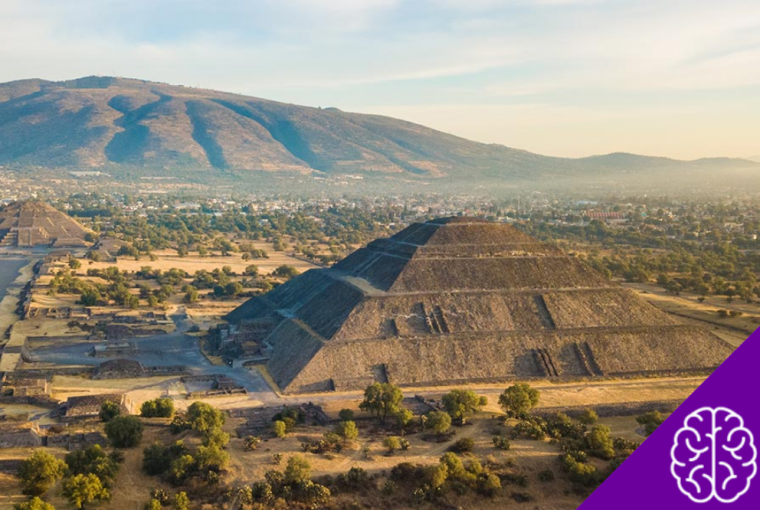The Aztecs, or, as they called themselves, the Mexicas, were one of the most advanced and intriguing civilizations to arise in Mesoamerican history. Flourishing in what is now central Mexico, their culture left an enduring legacy that continues to capture the world’s imagination.
From engineering marvels to unique social practices, the Aztecs were a civilization of astonishing complexity and creativity. But how much do you really know about them? Here are six fascinating facts about the Aztecs that go beyond what you learned in school.
1. They Buried the Dead Beneath Their Homes
The Aztecs believed the connection with their ancestors transcended death. It was common for them to bury loved ones beneath their homes.
Far from being merely practical, this tradition symbolized a deep spiritual bond with their ancestors, keeping their protection and guidance close, literally within their household foundations.
Imagine living in a house that not only represents your immediate family but also physically connects you to your entire lineage.
For the Aztecs, this practice wasn’t eerie but a way of maintaining enduring respect and devotion to their family roots.
2. The Bone-Chilling “Aztec Death Whistle”
If you think psychological warfare is a modern concept, think again. The Aztecs created the terrifying “Death Whistle,” a small clay instrument that emits a blood-curdling sound resembling a human scream.
Used in battle, these instruments struck fear deep into the hearts of their enemies, setting the psychological stage for conflict before swords were even drawn.
It wasn’t confined to warfare alone; the death whistle was also used in rituals to create a grim and haunting atmosphere that resonated with their spiritual practices.
3. Their Capital City Was Built on a Lake
Tenochtitlan, the majestic capital of the Aztec Empire, was ingeniously built on a series of small islands in the middle of Lake Texcoco.
Legend has it, the Aztecs were guided to settle there by divine prophecy. They allegedly saw an eagle perched on a cactus while devouring a snake, which they interpreted as a sign from their gods. This imagery is immortalized on Mexico’s modern flag.
The city itself was a feat of urban planning and engineering, with advanced aqueducts, floating gardens (chinampas), and an intricate system of canals that made it appear as though it was a city risen from the water.
4. Childbirth Was a Warrior’s Battle
Among the Aztecs, childbirth was regarded as an act of heroism. Women who died during childbirth were honored in the same way as soldiers who perished in battle.
This belief elevated the role of motherhood to a sacred status, underlining the immense cultural value they placed on both life and the bravery required to bring it forth.
The Aztecs believed the souls of these women ascended to join the sun in its celestial travels, assisting in its daily rise and set. A poetic and poignant illustration of their appreciation for the strength and endurance of women.
5. Education Was Universal and Mandatory
Unlike many other societies of the time, the Aztecs mandated education for boys and girls of all social classes. Schools were free and tailored to different paths of life.
Boys typically learned military and religious skills, preparing them for public service, while girls were trained in domestic skills and religious education.
This system reflects their commitment to fostering a society that valued structure, discipline, and knowledge.
Their belief that everyone deserved an education, regardless of status, was groundbreaking for its time.
6. They Feared the Sun Would Die Without Sacrifice
The Aztecs’ most well-known practices were human sacrifices, often misunderstood in popular culture. These sacrifices were rooted in their cosmic worldview.
They believed the sun’s daily cycle depended on receiving vital energy through rituals, or else it would “die,” plunging the world into darkness forever.
These rituals were both terrifying and awe-inspiring, symbolizing their deep reverence for the forces of nature. While the practice shocks modern sensibilities, it illustrates how interconnected their religious beliefs and daily lives were.
Lessons from a Fascinating Civilization!
The Aztecs were much more than a warrior culture or a footnote in colonial history. Their innovation, respect for family and education, and their connection to nature and the cosmos offer a window into their richly layered worldview.
What can we take away from their society? Their appreciation for structure and spirituality highlights universal themes of human civilization while reminding us of the cultural diversity that enriches our history.
Engage with us and share your thoughts. What fascinates you the most about the Aztecs? Would you live in a house built over your ancestors? Which part of their legacy resonates with you?


